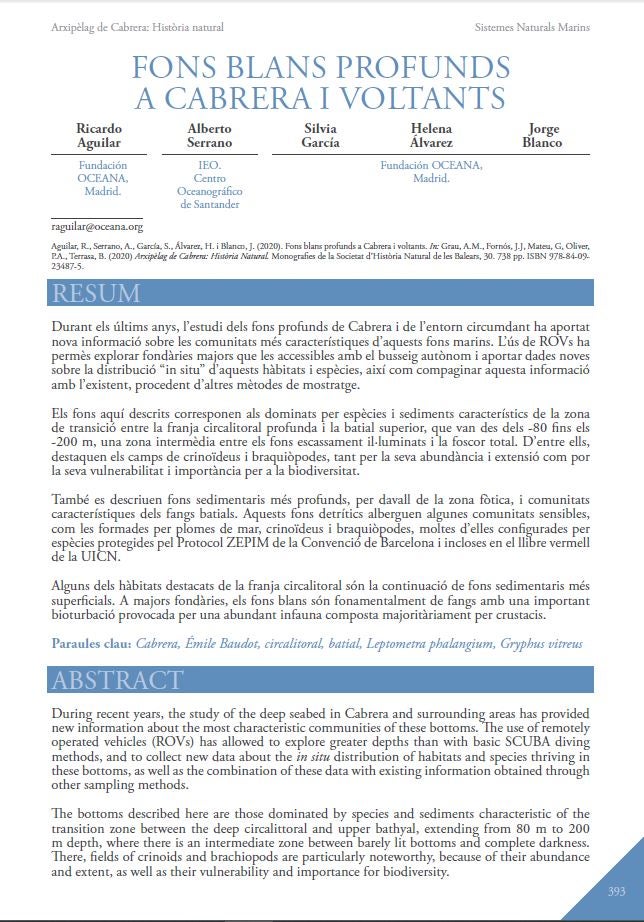Report | junio 1, 2020
Fons blans profunds a Cabrera i voltants
Abstract
During recent years, the study of the deep seabed in Cabrera and surrounding areas has provided new information about the most characteristic communities of these bottoms. The use of remotely operated vehicles (ROVs) has allowed to explore greater depths than with basic SCUBA diving methods, and to collect new data about the in situ distribution of habitats and species thriving in these bottoms, as well as the combination of these data with existing information obtained through other sampling methods.
The bottoms described here are those dominated by species and sediments characteristic of the transition zone between the deep circalittoral and upper bathyal, extending from 80 m to 200 m depth, where there is an intermediate zone between barely lit bottoms and complete darkness. There, fields of crinoids and brachiopods are particularly noteworthy, because of their abundance and extent, as well as their vulnerability and importance for biodiversity.
Shallower sedimentary bottoms from below the photic zone and communities that are characteristics of bathyal muds are also described. These detrital bottoms host some sensitive communities, such as those formed by sea pens, crinoids, and brachiopods. Many of these communities comprise species that are protected under the SPA/BD Protocol of the Barcelona Convention and included on the IUCN Red List. Some of the key habitats highlighted from the circalittoral zone represent extensions of shallower sedimentary bottoms. At greater depths, soft bottoms are essentially muddy, with significant bioturbation due to abundant infauna composed of numerous crustaceans.


